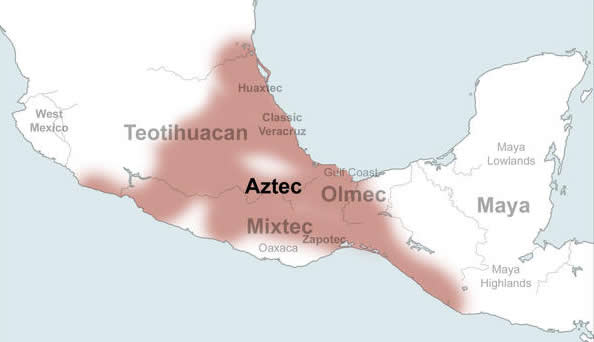
ICE Case Studies
Number 174, March 2006
Cortés and Aztec Gold
Initial Conflict and Modern Political Ecology
Stuart Matthews
1. ABSTRACT
The arrival of the Spaniards in the coastal and central regions of Mexico dramatically altered the course of Mesoamerican history in the direction of sustained ethno-environmental conflict. In the sixteenth century, mercantilism fueled European exploration and imperialism, empowering the ambitious conquistador Hernán Cortés to push the Spanish presence into the Valley of Mexico in search of gold. This action resulted in a momentous and violent east-meets-west clash of civilizations between the Spaniards and the indigenous Aztecs, the collapse of the latter’s complex imperial state stretched across most of northern and central Mexico, and the virtual genocide of the native population. The animosity between Europeans and Amerindians persists throughout Mexican history and into modernity, as ethnic conflict overlaps with environmental conflict in a 500-year battle over the region’s natural resources. Today, biodiversity replaces gold as the primary object of affection in Mexico, yet the fundamental struggle over natural resources continues to drive a violent wedge through contemporary Mexican society.
2. DESCRIPTION
Ethno-Environmental Conflict
Europe’s encounter with and treatment of the world’s tribal peoples is an immense theme, sprawling over five centuries and across all the inhabited continents. It is a tale of extraordinary human achievement in adversity, conferring on the victors the possession of much of the world’s physical resources, and a tragedy of staggering proportions, involving the deaths of many millions of victims and the complete extinction of numerous distinct peoples. When viewed as a single process, the European consumption of tribal society could be said to represent the greatest, most persistent act of human destructiveness ever recorded.
Mark Cocker, Rivers of Blood, Rivers of Gold
In political terms, conflict refers to an ongoing state of hostility between two groups of people, oftentimes, though not always, involving violence. When considering the roles of ethnicity and the environment in the context of such conflict, we develop the concept of ethno-environmental conflict. Ethno-environmental conflict refers to the influences of limited natural resources on violent and non-violent political disputes between different ethnic (both racial and cultural) groups and, conversely and cyclically, the influences of such conflict variables on the preservation or degradation of the environment and subsequent consequences affecting humanity.
Understanding ethno-environmental conflict in historical and contemporary Mexico requires a multi-step analysis in three parts. First, we will examine the environment aspects of the study centered on the historical gold and contemporary biodiversity resources of the region. Second, we will examine the conflict aspects centered on sixteenth century mercantilism and colonialism as well as modern-day international bio-markets, capitalism and neocolonialism. Finally, we will examine the overlaps of environment and conflict and their manifestations in specific ethno-violent events in Mexico. From ancient Aztec gold to the contemporary "green-gold" of Mexico’s southern states, from mercantilism to today’s global economy, and from the Siege of Tenochtitlán to the Acteal Massacre, ethno-environmental conflict is an enduring mainstay of the Mexican chronicle.
3. DURATION
Duration: 100 to 1,000 Years: From 1519 to the Present.
Despite the abundant evidence of a civilized existence comparable with the Spaniards’ own, within 18 months of the famous march across Mexico the European newcomers had reduced Tenochtitlán’s skyline and much additional evidence of Mexican sophistication to a platform of rubble. In that time, they had slaughtered nearly half the population. 1 The Siege of Tenochtitlán, according to histories, paintings and chronicles, lasted exactly 80 days 2 and effective control over the entirety of Mexico was complete only four decades after the arrival of the Spaniards. 3
With today’s mass media raising awareness around the world about Mexico’s contemporary ethno-environmental conflict, as we will discover in the sections below "it is wrong to speak of the conflicts of interest between indigenous groups and commercial interests as the new frontier, because they constitute one of the oldest frontiers." 4 The European-Amerindian struggle over natural resources began with the arrival of Spanish gold-lust on the American continent in 1519 and continues into the present over the riches of Mexico’s biodiverse ecosystems.
4. LOCATION
Continent: North America
Region: Southern North America
Country: Mexico

The location of our specific historical study is centered upon the Aztec city of Tenochtitlán (modern-day Mexico City) in Central Mexico. The location of our specific contemporary study is centered upon Southern and Central Mexico, particularly the Mexican states of Chiapas, Oaxaca, Tabasco and Michoacán.
The United States Central Intelligence Agency locates Mexico in "Middle America, bordering the Caribbean Sea and the Gulf of Mexico, between Belize and the United States and bordering the North Pacific Ocean, between Guatemala and the United States." 5 Chiapas is a state in the southeast of Mexico bordered by the states of Tabasco to the north, Veracruz to the northwest, and Oaxaca to the west. To the east, Chiapas borders Guatemala, and to the south the Pacific Ocean. Oaxaca is a state in the southern part of Mexico, west of the Isthmus of Tehuantepec. Oaxaca borders the states of Guerrero to the west, Puebla to the northwest, Veracruz to the north, and Chiapas to the east.
To the south Oaxaca fronts the Pacific Ocean. Tabasco is bordered by the Mexican states of Veracruz to the west, Chiapas to the south, and Campeche to the northeast. To the east, Tabasco borders with the Péten department of Guatemala, and to the north is the Gulf of Mexico. Tabasco is in the northern half of the Isthmus of Tehuantepec. Michoacán is a state in south-central Mexico bordered by the states of Colima and Jalisco to the west, Guanajuato and Querétaro to the north, México to the east, Guerrero to the southeast, and the Pacific Ocean to the south.
5. ACTORS
In our historical analysis, the primary actors on the Spanish side of the ethno-environmental conflict include Hernán Cortés (a.k.a. Hernándo, Fernándo, Fernán) and his entourage of fellow conquistadores and their sympathizers, including Doña Marina ("La Malinche"), the Totonac Amerindians, the Tlaxcalan Amerindians, and other indigenous members of the Spanish-Native Confederacy. The primary actors on the Aztec side include the Aztec leader Montezuma (a.k.a. Moctezuma, Motecuhzoma) and the Aztec Amerindians (a.k.a. Toltecs, Mexicas, Tenochca).
In our contemporary analysis, the primary actors on the Indigenous side of the ethno-environmental conflict include the various tribes of Mexican-Amerindians comprising 56 distinct peoples, 81 languages, and over 10 million individuals. 7 The primary actors on the Non-Indigenous side include the Mexican government, particularly the Ernesto Zedillo and Vicente Fox Quesada Administrations, multinational corporations (hereinafter, "MNCs"), and other biopirating entities including bioprospecting corporations and other empowering "front" organizations (i.e., a variety of seemingly innocuous research and environmental organizations financed by MNCs).
Environment Aspects: From Gold to "Green Gold"
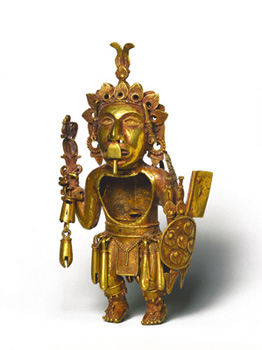 |
Gold (the Anglo-Saxon translation of the Latin word aurum, meaning "shining dawn") has been known and highly valued since prehistoric times. The relative value that historical societies placed on gold was derived not only because of the mineral’s beauty and resistance to corrosion (it is unaffected by air, heat, moisture, and most solvents), but also because it is easier to work than all other metals. For this reason, it may have been the first metal ever used by humans. Egyptian hieroglyphs from as early as 2600 B.C. describe gold, and gold is also mentioned several times in the Old Testament. The European exploration of the Americas was fueled in no small part by reports of the gold ornaments displayed in great profusion by Native American peoples, especially in Central America, Peru, and Colombia. 8 Gold is widely distributed throughout the world though it is very rare, ranking 75th in the order of abundance of all elements in the earth’s crust. 9 Because of its relative rarity, gold has sustained itself throughout human history as one of the world’s most valuable natural resources, serving as the primary medium of exchange in various regions of the world for millennia and as the recent monetary standard of the international financial system. 10 In modern times, biodiversity ("green-gold") has replaced gold as the international strategic resource of choice. Biodiversity is a measure of the relative diversity among organisms present in different ecosystems, including diversity within species and among species, and comparative diversity among ecosystems. The 1992 United Nations Earth Summit in Rio de Janeiro defined biodiversity as "the variability among living organisms from all sources, including, inter alia, terrestrial, marine, and other aquatic ecosystems, and the ecological complexes of which they are part: this includes diversity within species, between species, and of ecosystems." This is also the definition adopted by the United Nations Convention on Biological Diversity. 11 The simplest conceptualization envisions biodiversity as a reservoir of natural resources that can be drawn upon for the extraordinarily lucrative manufacture of food, pharmaceutical, cosmetic, biotechnology, veterinary science, seed, and agrochemical products. 12 This concept is the origin of modern economic and geopolitical interests in biorich ecosystems throughout the world. |
In sum, gold and green-gold comprise the "environment aspect" of our analysis of ethno-environmental conflict in Mexico. They are rare natural resources of high commercial value that are the objects of competitive lust in respective historical and contemporary contexts. As we shall discover in the "Conflict Aspects" section below, these resources gain their constructed value through the respective international economic systems in which they are placed, becoming therein the underlying forces of ethno-violence in old and new Mexico. |
|
6. TYPE OF ENVIRONMENTAL PROBLEM
Environmental Problem: Many (historical)
Sink Problems: Human Health and Cultural Loss (historical)
Environmental Problem: Many (contemporary)
Source Problems: Deforestation, Biodiversity Loss, Habitat and Species Loss (contemporary)
Sink Problems: Human Health and Cultural Loss, Pollution, Habitat and Species Loss (contemporary)
Source problems, sink problems and global problems comprise the three classifications of environmental problems most commonly used in ethno-environmental conflict analysis. Source problems include such subcategories as habitat loss, deforestation, coral loss, biodiversity loss, the loss of species on land, in the air and in the sea, and the emission of harmful radio waves. Sink problems include human health problems and cultural loss, various types of pollution of land, air and sea, and issues of waste. Finally, global problems include such issues as global warming and ozone loss, problems which affect all peoples around the world on a collective level. Based on the information that follows in the "Environment and Conflict Overlap" section, the environmental problem classifications most apt to the Spanish Conquest are the human health and cultural loss sink problem subcategories. The environmental effects of the sixteenth century Spanish presence in Mexico largely center upon the human diseases brought from the Old World, against which the Aztecs had no biological resistance. Measles, smallpox and mumps reduced the indigenous population of New Spain from over 1.5 million in 1519 to only 325,000 in 1570. In addition, the pure-blood element among those descended from these survivors largely disappeared as the conquerors took Aztec wives and mistresses. In time, they peopled New Spain with a majority of half-breed mestizos who today account for 60 percent of Mexicans. |
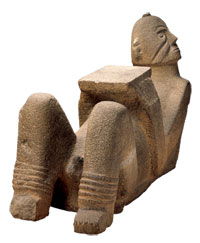 |
In modern times, science and communications technologies have given us greater insights into the environmental degradation effects of contemporary biopiracy activities. These effects involve the source problems of unregulated industrial logging, natural resource extraction (through petroleum drilling and hydroelectric power generation), and the commercial exploitation of endangered species, as well as the sink problems of carbon-dioxide emissions, desertification, and genetic contamination (through the use of genetically modified organisms).
7. TYPE OF HABITAT
Habitat: Many (historical)
Habitat: Many (contemporary)
Mexico, and especially Chiapas, owes its mega-diverse character to its geographic diversity, varying climates and geological complexity. Additionally, its role as a species bridge between North and South Americas also contributes to its biological wealth. Geographically, Mexico functions as a transition zone between two distinct regions: the tropical/neo-tropical (South and Central America) and the temperate/neo-arctic (North America). Mexico contains 34 of 36 identifiable ecoclimates, while the continental 48 states of the United States only contains four. Out of 28 categories of recognized soils, Mexico is home to 25. Though Mexico contains only 1.3 percent of the world’s landmass, it contains 14.4 percent of all living species in the world. Mexico has a large number of endemic species, and is the region of origin for some 118 plant species, including maize. 13
8. ACT AND HARM SITES
Act Site: Tenochtitlán (Mexico City), Mexico (historical)
Act Site: Acteal, Chiapas, Mexico (contemporary)
Harm Site: The Valley of Mexico (historical)
Harm Site: Central Mexico, particularly the Mexican states of Chiapas, Oaxaca, Tabasco and Michoacán (contemporary)
Conflict Aspects: From Mercantilism to MNCs
|
An examination of the conflict aspects of ethno-environmental issues in Mexico requires an overview of the negative social effects inherent to two distinct and time-specific systems of international economics. In the sixteenth century, mercantilism was the driving force behind European expansionism and colonialism; in modern times, neoliberalism has replaced mercantilism as a more sophisticated system of international economic dominance and exploitation, a practice pejoratively referred to as neocolonialism. Together, these systems comprise the empowering platforms upon which gold and green-gold produce ethno-environmental conflict in historical and contemporary Mexico. Mercantilism was the philosophy that guided European thinking about international relations as the dominant school of economics throughout the early modern period (from the sixteenth to the eighteenth century, a period of history roughly corresponding to the emergence of the nation-state). 14 A central belief of mercantilism was that a nation-state’s well-being or wealth was based on national holdings of gold (and, to a lesser extent, silver). 15 Domestically, this led to some of the first instances of significant government intervention and control over the economy, and it was during this period that much of the modern capitalist system was established. Internationally, mercantilism encouraged the many European wars of the period, and fueled international exploration and imperialism as competing European nation-states raced to discover and appropriate new sources of gold in remote areas of the world. 16 Neoliberalism refers to a more recent economic practice that de-emphasizes or rejects government intervention in the domestic economy and focuses on free-market methods, fewer restrictions on business operations, and private property rights. In foreign policy, neoliberalism favors the opening of foreign markets by political means, using economic pressure, diplomacy, and/or military intervention. Neoliberalism opposes socialism, protectionism and environmentalism, placing it at odds with fair-trade and other movements which argue that labor rights and social justice should be given a greater priority in international relations and economics. Critics of neoliberalism portray it as the imposition of free markets from the top-down, since it has been promoted for the benefit of MNCs through international financial institutions (e.g., the International Monetary Fund and the World Bank) and powerful core nation-states (e.g., the United States). Because these governmental institutions advocate neoliberalism, many identify the policies with exploitation by developed nations of less developed nations, whereby MNCs are ensured the advantages and positions of the developed countries that dominate them. Of particular importance is the criticism that neoliberal policies give MNCs economic power over democratically elected governments, as these corporations use their abilities to withdraw or infuse capital (thereby affecting a nation’s jobs and economy) as a tool to maintain coercive control over foreign governments. 17 |
In sum, mercantilism and neoliberalism comprise the "conflict aspect" of our analysis of ethno-environmental conflict in Mexico. They are international economic systems that create high values for and competitive lust over select natural resources in historical and contemporary Mexico. In the late eighteenth century, mercantilism began to lose out to more sophisticated economic theories as, in part, Adam Smith (Wealth of Nations) and economists after him pointed out that the mercantilists' push for gold had turned social priorities upside down (thereby negatively affecting a nation’s overall economic well-being), 18 fueling barbaric international conquests and the exploitation of indigenous groups around the world. In the contemporary world, neoliberalism remains in practice and is the origin of conflicts between indigenous groups and MNCs over accessibility to and ownership over resources in the bio-rich ecosystems of southern Mexico. As we shall discover in the "Environment and Conflict Overlap" section below, through an examination of specific conflict events, the overlapping of gold and green-gold with these institutional variables of conflict have produced violent clashes between ethnic groups in search of the empowering wealth that control over these resources provides.
9. TYPE OF CONFLICT Type: War (historical) 10. LEVEL OF CONFLICT Level of Conflict: Threat/High (historical) 11. FATALITY LEVEL OF DISPUTE (MILITARY AND CIVILIAN FATALITIES) Fatality Level: 272,400 (La Noche Triste: 400 Spaniards, 2,000 indigenous allies to the Spanish; Siege of Tenochtitlán: 30,000 indigenous allies to the Spanish, 240,000 Aztecs) (historical) Estimates of population losses and of casualty figures, especially from campaigns as distant as the Spanish conquest of Mexico, are always problematic. Often the only reliable principle is that the larger the figure, the less accurate it is likely to be. 19 For our purposes, we will opt for the most conservative figures as in this event there is no need for exaggeration to indicate its massive scale. In the Siege of Tenochtitlán, 30,000 men from the kingdom of Texcoco (part of the Spanish-Native Confederacy) were killed. Of the Aztecs, more than 240,000 were killed. Almost all of the Aztec nobility perished: there remained alive only a few lords and knights and the little children. 20 |
 |
IV. ENVIRONMENT AND CONFLICT OVERLAP
Environment and Conflict Overlap: From Tenochtitlán to Acteal
Historical Period
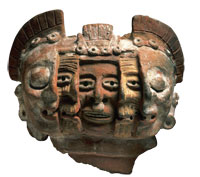 |
The historical foundation of Aztec gold as a mechanism of ethno-environmental conflict comes to the fore with the arrival of Hernán Cortés on Mexican shores in 1519, with 550 men and 16 horses in tow. Cortés clearly recognized the commercial and political value of American gold in the European mercantilist system as historians inform us that his conquista was "mainly aimed at the discovery of gold and other natural resources." 21 Cortés sailed from Cuba (where he had lived for eight years 22) to Veracruz with the sole purpose of gold extraction, having watched his seafaring forbears - Francisco Hernández de Córdoba and Juan de Grijalva - return to Spain from Cuba with relatively small amounts of gold valued at 16,000 pesos 23 and tales of vast amounts rumored to lie deep in the heart of Mexico. In Veracruz, Cortés discovered very little gold but acquired there another invaluable "resource" in the form of a translator named Doña Marina (sometimes referred to as "La Malinche") who through her trilingualism in Maya, Nahuatl and a dialect of Nahuatl spoken only to and in front of the Aztec Emperor, facilitated Cortés throughout his campaign. |
The tragic irony to the gold-thirsty Spanish missions to the New World is that prior to their arrival gold was not particularly precious to the Amerindians. The Aztecs had no metallic currency and used gold and silver only for ceremonial and personal decoration. 23a In fact, due to an over-abundance of gold, the Aztecs referred to it as "the excrement of the gods," 24 eagerly trading their substantial supplies of the "excrement" in the feathers and turquoise markets. This is perhaps humorously telling as to why the Aztec leader Montezuma first offered the Spaniards gold in an attempt to get them to leave his land, rather than the feather and turquoise commodities that carried higher Aztec market value. However, Montezuma was not aware of the European mercantilist system that bestowed upon gold more value than any other natural resource. Rather than invoking a retreat from Mexico, the gifts of gold only served to whet the Spanish appetite for extreme wealth.
Marching across the Valley of Mexico from Veracruz to Tenochtitlán (modern-day Mexico City), Cortés encountered the heart of the Aztec Empire and soon thereafter he and his entourage revealed their true colors concerning gold. As recorded in the Florentine Codex (an account of the Spanish conquest from the Aztec perspective, written by Bernardino de Sahagún), the Aztecs were transfixed by the behavior of the Spaniards in the presence of gold: "They picked it up and fingered it like monkeys. It was as if their hearts were satisfied, brightened, calmed. For in truth they thirsted mightily for gold; they stuffed themselves with it; they starved for it; they lusted for it like pigs." 25 Dramatically, Cortés himself told an emissary of Montezuma that his people were stricken by a "disease of the heart which can only be cured by gold." 26
As the Spanish presence among the Aztecs lengthened through various stages of peaceful and warlike exchanges over gold, environment and conflict climactically overlapped in what became known as the Siege of Tenochtitlán. Cortés, motivated by mercantilist promises of wealth and the unbearable shame of La Noche Triste one month prior (a dramatic battle in which the Spaniards suffered a massive loss of lives as they tried to sneak out of the city with large amounts of stolen Aztec gold), led his men and his Amerindian allies from various tribes (particularly the Totonacs and Tlaxcalans 27) into the city on August 13, 1521. The goal of the Spanish-Native Confederacy was total and complete conquest, which was accomplished through a brilliant strategy devised by Cortés, who divided his forces, attacked the Aztec towns around the shore of Lake Texcoco (upon which Tenochtitlán was built), blockaded the causeways leading into and out of the city, and destroyed the aqueduct providing water to the city as well as the Aztec canoe fleet. The combined effects of Cortés’ plan eventually took their toll on the overwhelming numbers of Aztecs as a lack of food and water weakened their physical strength and emotional resolve. After ten weeks of ensuing battle, Cortés officially conquered the great stronghold of the Aztec Empire. 28
Following his victory, Cortés extensively and systematically plundered the gold of the New World, leaving massive Aztec casualties in his wake. Four decades after the arrival of the Spaniards, effective control over the entirety of Mexico was complete. 29 At the time of the discovery of the Americas, the value of the total gold stock of Europe was less than $225 million. Shortly thereafter, subsequent to the fall of the Aztec Empire, Mexico contributed nine percent of total world production of gold. 30 The wealth and power gained from environmental Mexico - the site of Europe’s first major colonial conquest - would set Spain on a new, dazzling trajectory as the great European superpower of the sixteenth century. 31
Interim Period
Nuanced ethno-historical accounts have both illuminated and exaggerated the degree of sustained ethnic conflict between Amerindian and European "Mexicans" over the next several centuries. The defeat of the Aztecs was the most thorough decimation of an enemy in war that the Valley of Mexico had ever seen, yet Aztec Mexico was only the first of many Spanish conquests in Central and North America. Eventually, the viceroyalty of New Spain also covered El Salvador, Guatemala, Honduras, California, the southwestern United States, and Florida. Over all this vast area, the Aztecs and other Amerindians found themselves sucked into a world of new and disturbing experiences as thousands of immigrants crossed the Atlantic to settle on their lands. Their new overlord, the viceroy, ruled in the name of and under the direction of the king in distant Spain. A new capital, Mexico City, was built over the ruins of Tenochtitlán together with many other Spanish towns likewise founded on Aztec sites. In the new Spanish estates (encomiendas), the Aztecs were required to donate their labor and pay tribute, usually in the form of food and other domestic requirements. The encomenderos, for their part, were supposed to protect the Aztecs in their charge and oversee their conversion to Christianity. This system of exchange was greatly weighted in the Spaniards’ favor, giving them enormous potential for personal power and freedom. 32 In these circumstances, the exploitation of native labor was inevitable, both on the land and in the gold mines, which under the Spaniards were worked as never before. Even worse was the biological effect of the Spanish presence. The Aztecs died in droves from European diseases to which they had no resistance, a form of collateral slaughter repeated all over Spanish America. In New Spain, measles, smallpox and mumps proved to be mass killers. Overall, by 1570 the native population had been reduced from over 1.5 million to only 325,000. In addition, the pure-blood element among those descended from these survivors largely disappeared as the conquerors took Aztec wives and mistresses. In time, they peopled New Spain with a majority of half-breed mestizos who today account for 60 percent of Mexicans. 33 Through all this, and throughout Mexico’s subsequent political stages of independence, republicanism, a virtual 75-year PRI dictatorship, and current neo-liberalist globalization, Mexico’s indigenous populations have struggled to regain any meaningful control over, and at times even necessary access to, the country’s land and natural resources. |
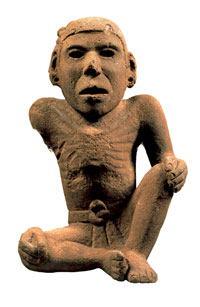 |
Contemporary Period
The indigenous Amerindians of Mexico have long struggled against the powers of the state and international neoliberal policies. The predominantly indigenous southern states have been exploited for centuries for resources such as corn, sugar, coffee, oil and hydroelectric power. Now, Mexico’s indigenous are faced with a new attack - subtler, but no less dangerous: biopiracy. Biopiracy is the illegal appropriation of the life forms - microorganisms, plants and animals - found in biodiverse ecosystems, and of the traditional cultural knowledge that accompanies these resources. Biopiracy is illegal because, in violation of international conventions and corresponding domestic laws (where they exist), it does not recognize, respect or adequately compensate the rightful owners of the biodiversity resources appropriated or the traditional knowledge related to their propagation, use and commercial benefit. Biopiracy commonly operates through the application of intellectual property rights to genetic resources and traditional knowledge. However, two key factors inhibit indigenous peoples’ use of such patent protections: extremely high costs and, more significantly, cultural values. For indigenous peoples whose traditional values and lifestyles are rooted in communal living, shared resources, and the interdependence of all living things, patenting life is an anathema to the very value system upon which their culture is based. 34
Biodiversity is now recognized as a highly strategic resource with commercial potential comparable to that of petroleum or uranium. The strategic importance of biodiversity is further compounded by the largely untapped potential of the emerging genetic engineering sector. Biodiversity market figures (in net annual sales) published by the Wall Street Journal in 2000, illustrate the importance of Mexico’s ecosystems as strategic resources of the twenty-first century (the much-touted "Biotech Century" 35): Food, $2-3 trillion; Agroforestry, $300-400 billion; Pharmaceutical, $300 billion; Agrochemical, $35 billion; Commercial Seed, $23 billion; Biotechnology, $23 billion; Veterinary Medicine, $19 billion; and Cosmetics, $15 billion. 36
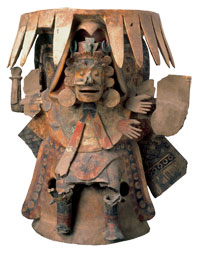 |
Given this economic reality, biodiversity and biopiracy issues are acutely important to modern Mexico's indigenous populations. According to The Worldwatch Institute, Mexico is identified as one of six countries in the world (the others being Brazil, India, Indonesia, Australia and The Democratic Republic of Congo) with exceptionally high levels of cultural and biological diversity and high concentrations of endemic plant species. Another report identifies Mexico as one of six different (with the exception of Indonesia) countries (the others being the Philippines, Colombia, West Papua, Indonesia, Madagascar and Papua New Guinea) around the world targeted as "biodiversity hotspots." 37 Not surprisingly, then, the Amerindians of Mexico’s tropical and subtropical regions, lying primarily in its southern states, are focal points for biopiracy ventures. Mexico's indigenous suffer not only from the denied economic gains inherent to these resources and indigenous knowledge, but also from the environmental degradation effects of biopiracy activities in the region: carbon-dioxide emissions, unregulated industrial logging, desertification, natural resource extraction (through petroleum drilling and hydroelectric power generation), genetic contamination (through the use of genetically modified organisms), commercial exploitation of endangered species, and the disappearance of traditional cultures. 38 Moreover, modern gold mining in southern Mexico, an ever-present carryover activity of the Spanish Conquest, is one of the world's dirtiest industries, polluting water and land with cyanide and leaving long-lasting scars on communities and landscapes. 39 |
MNCs in the life science industry are the predominant perpetrators of biopiracy. The largest life science biopirates currently operating in Mexico include two based in France (Aventis and Groupe Limagrain), six based in the United Kingdom (Astra Zeneca, Advanta, Unilever, Diageo, Grand Metropolitan, and Glaxo Wellcome), three based in Germany (Bayer, BASF, and KWS AG), two based in Japan (Sumitomo and Sakata), one based in Mexico (Grupo Pulsar / Seminis), and seventeen based in the United States (Dow AgroSciences, America Home Products, Dupont/Pioneer, Phamacia/Monsanto, Dow/Cargill North America, Delta & Pine Land, Philip Morris, ConAgra, PepsiCo, Coca-Cola Co., Mars Inc., Merck, Bristol-Meyers, Pfizer, American Home Products, Johnson & Johnson, and SmithKline). 40
The passage of the North American Free Trade Agreement (hereinafter, "NAFTA") and the initiation of the Zapatista (a.k.a., "EZLN") indigenous group uprising in Chiapas (home to the Montes Azules Biosphere and the Lacandon Rainforest 41) on the day NAFTA went into effect brought the modern-day Amerindian struggle to a prominent place in the global consciousness. While Chiapas serves as a convenient reference point for illustrating ethno-environmental conflict in contemporary Mexico, the battle is waged not only in this state but also in the nearby states of Oaxaca (with the highest indigenous population at 52.72%), Yucatan (52.48%) and Tabasco, 42 as well as in the central states such as Michoacán where indigenous people are actively demanding and defending their rights to control land, water, and natural resources. 43 Small-scale violence has been an ongoing feature of southern Mexico as Mexican military forces, MNC-financed paramilitary forces, and Zapatista guerrillas struggle over control of the region. Since 1992, Chiapas has remained the most militarized state in Mexico. 44 Caught in the crossfire between the Zapatistas, the Mexican government, and the powerful MNCs are ordinary indigenous individuals who are collectively resisting in non-violent ways the devastating effects of corporate globalization on their land. These individuals’ support of the Zapatistas have provoked violent backlash from paramilitary groups in the latter’s efforts to oust indigenous people from the rich biospheres of the region. 45
The ethno-environmental conflict raging in southern Mexico reached a dramatic culmination point in the public consciousness through a violent event known as the Acteal Massacre. The Acteal Massacre occurred in the small village of Acteal in the Mexican state of Chiapas and involved the mass murder of 45 people attending a prayer meeting of Roman Catholic indigenous townspeople, including a number of pregnant women and children. The victims of the massacre were members of a pacifist-activist indigenous rights group known as Las Abejas. On December 22, 1997, paramilitary forces (widely assumed to have close ties to figures in the federal military and in the federal and Chiapas state governments) opened fire on Las Abejas, instantly killing 45 of its members. 46 While the event invoked a global public outcry, its perpetrators have yet to be identified and brought to justice. According to the U.S. Department of State’s 2004 Country Reports on Human Rights Practices, "[as of the end of 2004,] there were no new developments and none were expected in…the 1997 killing of 45 persons in Acteal, Chiapas." 47
12. ENVIRONMENT-CONFLICT LINK AND DYNAMICS
Causal Diagram.
13. LEVEL OF STRATEGIC INTEREST
Scope: Bilateral (historical)
Scope: Substate & NGO, Multilateral, Global (contemporary)
14. OUTCOME OF DISPUTE
Outcome: Victory (Spanish), Yield (Aztecs) (historical)
Outcome: In Progress (contemporary)
The Future of Mexican Political Ecology
The constitutional denial of indigenous claims and fundamental rights is deeply rooted in the history of Mexico. In 1824, the first fully-fledged operational Constitution, the same that gave birth to the present Mexican State, actually treated the Aztecs and their Amerindian cohorts (including the Maya), as foreigners. With the Constitution of 1857 came an aggressive campaign of compelled sales of indigenous communal property, aggravating the conditions of poverty, isolation and exploitation suffered over the centuries by these groups’ ancestors. In 1917, after a painful revolution, a Constitution was promulgated which, though guaranteeing the protection of indigenous lands, laid the grounds for an ethnocidal institutional policy. 48 In Mexico, indigenous populations survive; nevertheless, race-mixing has become the main characteristic and represents the epicenter of an integrative national consciousness. This phenomenon discriminates against indigenous inhabitants. 49 |
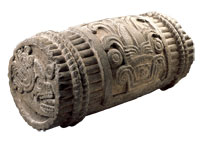 |
Some 500 years ago, a Spanish priest, Fray Bartolome de las Casas, documented horrible human rights abuses, murders, enslavement and tortures perpetrated by the colonizers. Today, human rights activists - including some from the eponymous Fray Bartolome Center - work to document continuing abuses perpetrated against indigenous people and leaders fighting for self-determination and freedom from crushing poverty. These include death threats, displacemtns, NGO-documented accusations of torture, and the Acteal Massacre. 50 Armed conflict in the post-Cold War period is increasingly characterized by a specific political ecology closely linked to the geography and political economy of natural resources. 51 What gold remains in Mexico continues to be extracted by foreign powers, and bio-piracy in Chiapas, Oaxaca, Tabasco, Michoacán, and other states continues to drive ethno-environmental conflict in Mexico.
The Zapatista/EZLN uprising in January of 1994 brought the struggle for indigenous autonomy to the forefront of the national agenda. A ceasefire initiated on January 12, 1994 has been formally upheld, despite outbreaks of paramilitary violence, the worst of which was the Acteal Massacre in 1997. The federal Mexican government agreed to include demands for indigenous rights in the peace talks held in San Andrés Larrainzar. The EZLN invited over 200 members of civil society to participate as advisers in the talks, including representatives from the National Indigenous Congress (CNI) (an umbrella organization of indigenous organizations that has become the most representative national organization of indigenous peoples in the country). Following difficult negotiations, the Accords on Indigenous Rights and Culture were signed by the government and the EZLN. A multi-partisan Congressional commission subsequently translated the pact into a legal initiative in 1996. However, then-president Ernesto Zedillo blocked the initiative and proposed major modifications. In 2001, current Mexican President Vicente Fox Quesada sent the original initiative to Congress and in April of that year, following a major EZLN/CNI march to Mexico City, the three major political parties (PRI, PAN and PRD) passed a watered-down version of the law in the Senate and House of Deputies.
Passage of the original initiative and implementation of the San Andrés Accords was a prerequisite for resuming peace talks, which have been stalled since 1996. The other conditions are withdrawal of military bases in rebel zones in Chiapas, and the liberation of Zapatista political prisoners. These demands have been only partly met by the Fox Administration. Most observers also believe that a clear commitment to end the violence of paramilitary groups in Chiapas is necessary. Paramilitary attacks have claimed hundreds of lives, including the massacre of 45 men, women, and children at Acteal.
The Constitutional reform passed by Congress seriously curtails indigenous autonomy as defined in the San Andrés Accords. Self-government is restricted to the village level and traditional normative systems must be validated by the respective state government and court system. In the crucial area of access to and control over decisions on land and natural resource use in Amerindian territories, the new law reduced collective rights to a vague reference to "preferential use." Indigenous groups argue that the modifications not only do not comply with the minimum required to reinitiate peace talks in Chiapas, but also fail to assure the rights recognized in Convention 169 of the International Labor Organization, signed into law by the Mexican government. Scores of indigenous communities have since challenged the Constitutional reform in the courts.
Simultaneously, Amerindian communities and regions in Chiapas and across the country have adopted a strategy of simply declaring autonomy and publicly defining their own forms of self-government. While the existence of these practices dates back to colonial times in many communities and has been tacitly accepted by successive governments, this is perhaps the first time that a defense of forms of traditional self-government constitutes part of a coordinated campaign to resist official denial of collective rights. The announcement of self-proclaimed "autonomous municipalities" and declarations of autonomy from indigenous regions and communities have become common occurrences in the context of the failed attempt to legitimate forms of indigenous autonomy in national law. 52
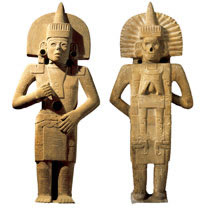 |
Primary remaining issues in Mexico's centuries-old ethno-environmental conflict are governmental autonomy, access to land unimpeded by MNC or private ownership, cultural preservation, self-determination, judicial remedy, and the desire to be seen as peoples rather than as geographically localized communities. Both the Zapatistas and activist organizations identify neoliberal politics - in the form of NAFTA, the Central American Free Trade Agreement, the proposed Free Trade Area of the Americas, and the proposed Plan Puebla Panama, which would open southern Mexico and Central America to foreign investment and mega-construction projects - as fundamental to attacks on communities, destruction of biodiversity and unwillingness to devolve power and funds to local government. It therefore appears that unless the Mexican government begins to recognize and surrender human rights, including economic sufficiency and self-determination for Mexico’s Amerindian groups, armed struggles like that of the EZLN and smaller-scale uprisings in other regions of the country will remain the resistance method of choice, thereby circulating the history of Mexico into the contemporary world and back again. 53 |
Recognizing the potential state of perpetuation such stalemates and cyclical conflicts produce, Zapatista leader Comandante Cero (f.k.a. Subcomandante Marcos) has recently launched a six-month public awareness tour of Mexico’s 31 states, embarking on the campaign on a black motorcycle, reminiscent of Che Guevera's consciousness-awakening tour of South America in the 1950s. With its timing, the Zapatista tour, dubbed the "Other Campaign," became part of a wider current struggle of the 60 million Amerindians in Latin America, catapulted by the sweeping reforms of Venezuelan President Hugo Chavez and the election of Evo Morales in Bolivia. In Mexico, the home of 13 million Amerindians, the Other Campaign coincides with the imminent 2006 presidential campaign. While Cero-Marcos promises to form a new national leftist movement in support of Mexico's indigenous, Mexican President Vicente Fox Quesada launched his own weeklong tour of Amerindian communities. 54 As it always is in Mexico, the battle is on.
V. RELATED INFORMATION AND SOURCES
15. RELATED ICE CASES
Three searches were conducted using the Inventory of Conflict and Environment (hereinafter, "ICE") Database Engine in an attempt to locate similar case studies that may provide useful insights and relevant outside sources for this project. The first ICE Database Engine search, centered on the free-text search term "gold," yielded only four results in the abstracts (actually six: two of the abstracts' links found no matches to their full reports), all of which yielded relevancy scores at 100 percent. These cases involve subject matter related to the environmental consequences of gold mining in the Amazon as it relates to the Yanomami indigenous population living in portions of Brazil and Venezuela; the exploitation of certain regions of Papua New Guinea by MNCs in search of gold and the environmental and public health side-effects of mining upon local residents in the region; gold mining in the Guyana region of southern Venezuela and its detrimental effects on the region’s unique biodiversity, as well as the native rights to a clean environment and portions of the profits from extracted gold; and, lastly, the amphetamine trade between Burma and Thailand.
The second search, centered on the combined search fields of "Country: Mexico" and "Environmental Problem: Rights" yielded 11 pages of results, only three of which did not yield relevancy scores of 83 percent (92 percent in the case of each of the three). A change to the importance weighting for the two search fields yielded little noticeable change in results. The three top relevancy cases are all centered in Mexico, the top two of which relate to the Zapatista uprising in the Chiapas region. The third most relevant case is a treatment of the Mayans. These results appear to indicate the strong correlation between this case study and those that specifically treat the Chiapas conflict.
The third search, centered on the combined search fields of "Continent: North America," "Region: Southern North America," "Country: Mexico," "Environmental Problem: Rights," "Scope: Substate and NGO," "Trigger: Resources," and "Outcome: In Progress," also yielded 11 pages of results, but with wider varying relevance frequencies than those yielded by the second search. The search result records towards the top tiers from both searches two and three revolve around the indigenous and their access rights to the natural resources of their native lands. Qualitatively, the most relevant search result is the Guyana case study entitled "Gold and Native Rights in the Guyana region of Venezuela." Other cases that appear to provide the most relevance to this project are those that center on the Zapatista struggle in Mexico. Together, the Guyana study, at 100 percent relevancy, and the Chiapas studies, each at 92 percent in search two and at 58 percent and 83 percent respectively in search three, form a solid basis for comparative analysis as we progress through the above stages of "Cortés and Aztec Gold: Initial Conflict and Modern Political Ecology."
Reed, Colleen. "Gold and Native Rights in the Guyana region of Venezuela." ICE Case Studies, Number 55, November 1997.
Marx, Amanda. "Chiapas Civil War and Environment." ICE Case Studies, Number 13, May 1997.
Willis, Andrew. "Land, Biodiversity, and Exploitation in the Conflict Zone of Chiapas, Mexico." ICE Case Studies, Number 157, August 2005.
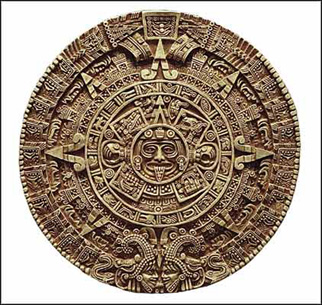
Date of Authorship: March 4, 2006
All images are in the public domain, or their unrestricted use has been granted by the copyright holder.
16. RELEVANT WEBSITES AND LITERATURE
BIBLIOGRAPHY
Berler, Beatrice. The Conquest of Mexico. San Antonio: Corona Publishing, 1988.
Brown, Dale M., ed. Aztecs: Reign of Blood & Splendor. Alexandria: Time-Life Books, 1992.
Carlsen, Laura. "Self Determination Regional Profile - Mexico." Foreign Policy in Focus (October 2001).
Cocker, Mark. Rivers of Blood, Rivers of Gold. New York: Grove Press, 1998.
Cortés, Hernan. Letters from Mexico. Translated by Anthony Pagden. New Haven: Yale University Press, 1987.
Díaz del Castillo, Bernal. The Conquest of New Spain. London: Penguin Books, 1963.
Encarta Encyclopedia. "Gold."
Global Exchange. "Biopiracy: A New Threat to Indigenous Rights and Culture in Mexico." Programs in the Americas Series (December 2004).
Gónzales, Mónica. "Ethnic Minorities in Mexico, United States and Canada: A Comparative Study of Coexistence." Diálogos Latinoamericanos, 005 (2002), pp. 1-23.
Guggenheim Museum. "The Aztec Empire: Noble Life and Everyday Life." Arts Curriculum Online.
Hayden, Cori. When Nature Goes Public: The Making and Unmaking of Bioprospecting in Mexico. Princeton: Princeton University Press, 2003.
International Forum on Globalization. "Indigenous Peoples and Globalization Program."
Le Billon, Philippe. "The political ecology of war: natural resources and armed conflicts." Political Geography, 20 (2001), pp. 561-584.
Leon-Portilla, Miguel, ed. The Broken Spears: The Aztec Account of the Conquest of Mexico. Boston: Beacon Press, 1992.
Martinez-Alier, Juan. The Environmentalism of the Poor: A Study of Ecological Conflicts and Valuation. Northampton: Edward Elgar Publishing, 2002.
Miller, Robert Ryal. Mexico: A History. Norman: University of Oklahoma Press, 1985.
Montes, Adelfo Regino. “Constitutional Denial - Mexico’s Legislative Deception on Indigenous People.” La Jornada, 28 April 2001.
New Advent Catholic Encyclopedia. "Aztecs."
No Dirty Gold. "Don't Tarnish Your Love With Dirty Gold!" CorpWatch (February 2004).
Norrell, Brenda. "Zapatistas tour cements shift for indigenous rights." Indian Country Today, 9 January 2006.
Phillips, George Brinton. “The Metal Industry of the Aztecs.” American Anthropologist, New Series, Vol. 27, No. 4 (October - December 1925), pp. 550-557.
Pugel, Thomas A. International Economics. New York: McGraw-Hill, 2004.
Ralph Lewis, Brenda. The Aztecs. Guernsey: Sutton Publishing, 1999.
Replogle, Jill. "Mining Boom: Who wins? Who loses?" Latin America Press, 27 January 2005.
Ross, John. The Annexation of Mexico: From the Aztecs to the I.M.F. Monroe: Common Courage Press, 1988.
Schabus, Nicole. "No Power to International Free Trade With Indigenous Property." Journal für Entwicklungspolitik (Journal for Development Policy) XVIII/2 (2002).
Schmal, John P. "The Indigenous People of Central Mexico." Houston Institute for Culture Educational Project (2003).
Steinbach, John, Phillip Wheaton, and Milton Shapiro. "Access of Evil: Genocide in Chiapas." CovertAction Quarterly (Fall 2004).
Thomas, Hugh. Conquest: Cortés, Montezuma, and the Fall of Old Mexico. New York: Simon & Schuster, Inc., 1993.
Tilly, Chris. "Indigenous Land Struggles in Michoacán, Mexico: 'We've fought for the land since time immemorial.'" PeaceWork Report (July/August 2004).
United States Central Intelligence Agency. World Factbook 2005: Mexico. Washington, DC: Central Intelligence Agency, 2005.
United States Department of State. Country Reports on Human Rights Practices 2004: Mexico. Washington, DC: Department of State, 2005.
Wikipedia. "Acteal Massacre."
Wikipedia. "Biodiversity."
Wikipedia. "Gold."
Wikipedia. "Mercantilism."
Wikipedia. "Neoliberalism."
Wikipedia. "Siege of Tenochtitlan."
Zinn, Ryan. "The Lacandon Jungle's Last Stand Against Corporate Globalization: Plan Puebla Panama and the fight to preserve biodiversity and indigenous rights in Chiapas." CorpWatch (September 2002).
Zwarenstein, Carlyn. “Letter from Chiapas: Decolonization and indigenous struggle.” Canadian Business and Current Affairs (2002).
ENDNOTES
1. Cocker, Mark. Rivers of Blood, Rivers of Gold. New York: Grove Press, 1998, p. 32.
2. Schmal, John P. "The Indigenous People of Central Mexico." Houston Institute for Culture Educational Project (2003).
3. Brown, Dale M., ed. Aztecs: Reign of Blood & Splendor. Alexandria: Time-Life Books, 1992, p. 9.
4. Schabus, Nicole. "No Power to International Free Trade With Indigenous Property." Journal für Entwicklungspolitik (Journal for Development Policy) XVIII/2 (2002), p. 100.
5. United States Central Intelligence Agency. World Factbook 2005: Mexico. Washington, DC: Central Intelligence Agency, 2005.
6. NativeWeb.
7. Carlsen, Laura. "Self Determination Regional Profile - Mexico." Foreign Policy in Focus (October 2001).
8. Wikipedia. "Gold."
9. Encarta Encyclopedia. "Gold."
10. Wikipedia. "Gold."
11. Wikipedia. "Biodiversity."
12. Global Exchange. "Biopiracy: A New Threat to Indigenous Rights and Culture in Mexico." Programs in the Americas Series (December 2004).
14. Wikipedia. "Mercantilism."
15. Pugel, Thomas A. International Economics. New York: McGraw-Hill, 2004, p. 37.
16. Wikipedia. "Mercantilism."
17. Wikipedia. "Neoliberalism."
23a. New Advent Catholic Encyclopedia. "Aztecs."
24. Guggenheim Museum. "The Aztec Empire: Noble Life and Everyday Life." Arts Curriculum Online.
28. Wikipedia. "Siege of Tenochtitlan."
30. Encarta Encyclopedia. "Gold."
32. Ralph Lewis, Brenda. The Aztecs. Guernsey: Sutton Publishing, 1999, pp. 87-91.
35. Zinn, Ryan. "The Lacandon Jungle's Last Stand Against Corporate Globalization: Plan Puebla Panama and the fight to preserve biodiversity and indigenous rights in Chiapas." CorpWatch (September 2002).
37. Steinbach, John, Phillip Wheaton, and Milton Shapiro. "Access of Evil: Genocide in Chiapas." CovertAction Quarterly (Fall 2004).
39. No Dirty Gold. "Don't Tarnish Your Love With Dirty Gold!" CorpWatch (February 2004).
42. Gónzales, Mónica. "Ethnic Minorities in Mexico, United States and Canada: A Comparative Study of Coexistence." Diálogos Latinoamericanos, 005 (2002), pp. 1-23.
43. Tilly, Chris. "Indigenous Land Struggles in Michoacán, Mexico: 'We've fought for the land since time immemorial.'" PeaceWork Report (July/August 2004).
46. Wikipedia. "Acteal Massacre."
47. United States Department of State. Country Reports on Human Rights Practices 2004: Mexico. Washington, DC: Department of State, 2005.
48. Montes, Adelfo Regino. “Constitutional Denial - Mexico’s Legislative Deception on Indigenous People.” La Jornada, 28 April 2001.
50. Zwarenstein, Carlyn. “Letter from Chiapas: Decolonization and indigenous struggle.” Canadian Business and Current Affairs (2002).
51. Le Billon, Philippe. "The political ecology of war: natural resources and armed conflicts." Political Geography, 20 (2001), pp. 561-584.
52. Carlsen, Laura. "Self Determination Regional Profile - Mexico." Foreign Policy in Focus (October 2001).
54. Norrell, Brenda. "Zapatistas tour cements shift for indigenous rights." Indian Country Today, 9 January 2006.